Interview: Jean-Marc Virard
The RIGARDS co-founder on his lifelong passion for eyewear and the brand’s balance between avant-garde and wearable

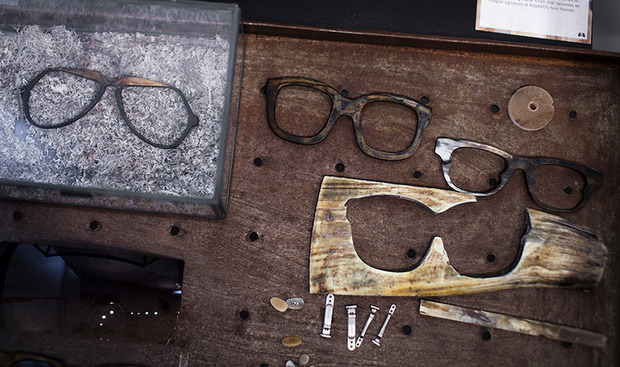
RIGARDS may be the new kid on the independent eyewear block but there is no ounce of hesitation in the bold statement they’re making. Their handcrafted matte horn frames strike a perfect balance between avant-garde and wearable, serving as an antithesis to factory-produced frames slapped with luxury fashion labels and churned out in the thousands. RIGARDS is the brainchild of Ti Kwa and Jean-Marc Virard, both of whom have extensive backgrounds in the fashion and music industry and share a decades-long passion for collecting vintage glasses.
RIGARDS is returning to original material for glasses—buffalo horn, as used by the Inuits to shield their eyes—and placing them in a contemporary context with striking designs and surface textures we’ve never seen before, all the while being sensitive to the environment. Because they chose a natural by-product rather than something synthetically manufactured, RIGARDS frames are similar to leather boots that grow with you over time—the glasses adapt to your face as the horn reacts to the oil and heat from your skin.
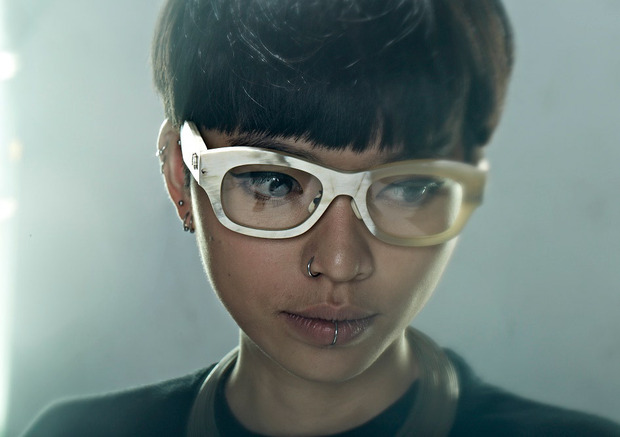
The duo (Kwa leads the designing and production while Virard directs marketing and branding) split their time between Los Angeles, France and their workshop atelier in Hong Kong where the frames are designed and made by in-house horn-masters. This cosmopolitan perspective, paired with an intimate and organic approach to designing eyewear (most of the faces in their video campaign are friends, real people in the creative industry) results in a pair of unique and meaningful frames. We spoke with co-founder Jean-Marc Virard about the brand’s steadfast commitment to recycling, his first ever pair of glasses and a surface treatment named after a samurai film.
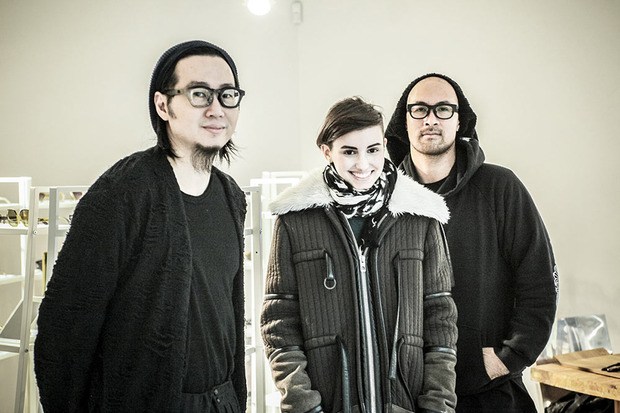
You’re from France, Ti is from Malaysia—how did you guys meet and become partners?
We actually met in a weird situation; at a secret vintage eyewear store in Hong Kong where they sell hard-to-find frames. They don’t advertise at all and the actual store is hidden in the back of another store, so if you don’t know about it, there’s no way to find out.
The store, believe me, is so small—it’s like a pocket. There’s not even four walls! It’s three little walls and technically if you put maybe three or four people in there, it’s already like a nightclub. We couldn’t miss each other because it was so small. He looked at me and said, “Oh my God, I love your frames—they’re very good frames.” I looked at him and said, “Hey, yours are pretty good too.” A simple and weird story—very odd, but at the same time, it’s a story that could happen to a million people: Getting to know each other based on a passion.
This is how we first met, and from there, bit by bit, we built a friendly relationship and one day we said, “Hey, why don’t we do an eyewear brand?” Because after buying and collecting frames for over 20 years, we gain a certain experience as passionate people rather than as professional, optical people. So RIGARDS really started with us as eyewear lovers.
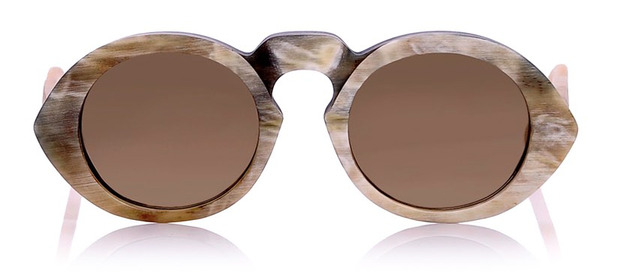
How did you decide your frames would be made only from horn?
In the beginning, we wanted to do acetate. We just wanted to design frames that we were going to wear. We went and visited a bunch of factories and we saw how acetate was made, and it was very disappointing. It was smelling really funky. That smell, you knew right away—this thing wasn’t natural.
Even the way we came up with the name, RIGARDS, was very natural. Because I’m French, the idea comes from the word “regards” in French, it means “to look.” Both of us were communicating in English, and we were like, “maybe we could play with ‘best regards'”— that concern for the other. This is our main concern, how we could really share that love we have for eyewear. So it made sense to do something with horn because it’s definitely eco-friendly and everything is recycled.

Is horn a common material for eyeglass frames?
It’s not common but horn is actually the original material. Before plastic, there was horn. You know the Inuits? They used to get the horn from mammoths and other animals to make glasses and protect their eyes from the sun. We’re just going back to the traditional way.
Where do you source your horn from?
We use water buffalo in Ethiopia and Egypt. We actually work with the farm and recycle everything. Everything means everything—the horn and also the leather. The case for our sunglasses, we make from buffalo leather. We have that idea of trying to get as much as possible out of it.
It is pretty interesting to see what you can do with buffalo. The farmers use them to work the field—the buffalo are very good workers just like cows—and actually eat the meat. Obviously we don’t kill animals; we wait for them to fall. When the buffalo dies, we don’t know the colors until we receive them.
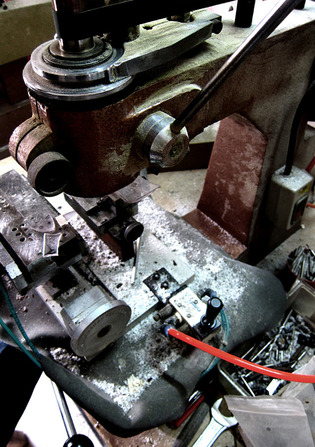
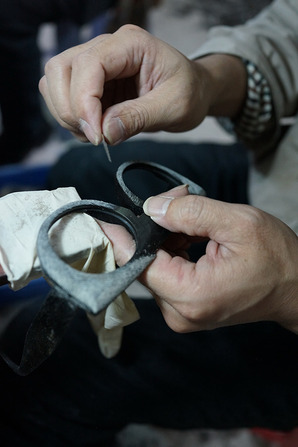
What happens after you collect all the material?
We work very fast because we have a few horn-masters in-house. Each pair is handled and built up from A to Z by the same person. It’s not like one guy is handling just the temple, the other guy is handling the hinges—one horn-master starts and finishes each frame.
The horn-masters are aged and they have apprentices who are learning from them. They’re not like 85 years old but they’re definitely older than us; they’re real gentlemen. With our frames, we try to bring more modern, structural, architectural design and apply ancestral technique to it. It’s a very weird combination because for us, it’s all about contrast.
Ti has been working in production for years for brands like Bell & Ross. I’ve been doing marketing and strategies for brands such as Surface to Air, Dior, Comme de Garçons. I did work for Lady Gaga; I’m also into the music business. I am a creative director on the music level and I do soundtracks for commercials but everything is related to my work with fashion. For us, we could have done a fashion brand (and who knows, maybe we’ll do it in the future) but we just wanted to do something with more intimacy and based out of passion. That’s the reason we decided to go for eyewear.

What makes you so passionate about eyewear?
In the beginning, it’s like a utility. You need to wear prescription to be able to see the food you eat, to drive or to read, so for us, it started that way. When you’re young, you’re not really happy wearing prescription eyewear. From there, both of us were really into fashion at a pretty young age. I was lucky because my family is all into fashion—or food. Ti’s mom is actually a tailor—she’s been doing clothing her entire life. We’ve been really into that fashion, looking good type of thing since we were kids. So obviously we had to flip that utility of prescription glasses into an accessory, like a part of an outfit. So we’ve both been collecting for years and years.

Do you remember what your first frames were?
My first pair of glasses were tortoiseshell, from Façonnable. It was a very French-y, proper, preppy brand. The temple was all metal and I was so proud of it. It was very nerdy and I had long hair too—I looked like a hippie, preppy 12-year-old. After that, I had pretty crazy structural Jean-Paul Gaultier frames and then I started buying super cool frames. I was really into big frames. That’s the reason why our RIGARDS frames are pretty big too.
What’s funny is that I grew up skateboarding and that culture is pretty extreme. That’s the reason why I’m aware of differences. I’ve never been afraid of cross-culture because of my skateboarding background. I didn’t necessarily have the punk outfit but had that punk attitude, I wasn’t scared to dress up.
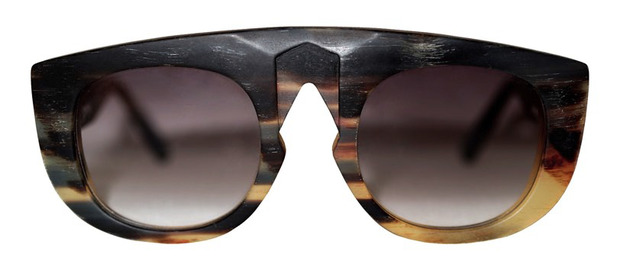
With such unusual frames, what has the reception been like for RIGARDS?
We launched last year—technically to the public, last July. It was an amazing surprise for us that people really loved it. I guess maybe it’s because we’re in the middle of a recession and people weren’t taking that much risk, and we came up fresh because we’re young and very, almost naïve. We’re not scared of anything and people were able to appreciate it. We entered the industry in a different way. A lot of our clients are like, “You guys are pretty crazy, you have no limit.” As long as there is a certain aesthetic that speaks to our philosophy, which is recycling and our passion, it doesn’t really matter.

Where do you draw inspiration from to create your eyewear styles?
I want to speak more for myself because Ti and I have different sources of inspiration. My vision is definitely more focused on contemporary art. I love minimalism. I love Richard Serra, the sculptor. He does those super crazy minimal shapes, all his pieces are metal, copper, crazy materials and it looks rusted and has curvy shapes. I’m really into minimalism. Everything that I love is so emptied out, so straight to the point.
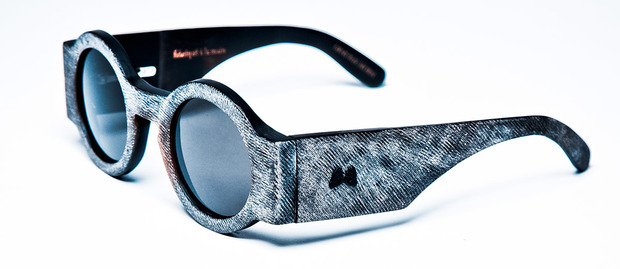
What new styles will you be showing for the upcoming Paris Fashion Week?
With our RIGARDS signature horn, everything is matte. You’ll never find glossy frames with us—we don’t like that at all. That was our first design. Our second is a special horn treatment that we created, a hand-finished scratching technique we call SANJURO. The name comes from the classic Japanese samurai movie Sanjuro—it’s the way the swordsman used to slash people to kill them. The treatment makes the surface even more raw and crazy than just the matte texture; it works well on black—it makes it kind of grayish and gives a feeling of being stone. Like the way [director] Akira Kurosawa created a whole series and another world, we are kind of creating a new world through this texture that is as natural as possible.
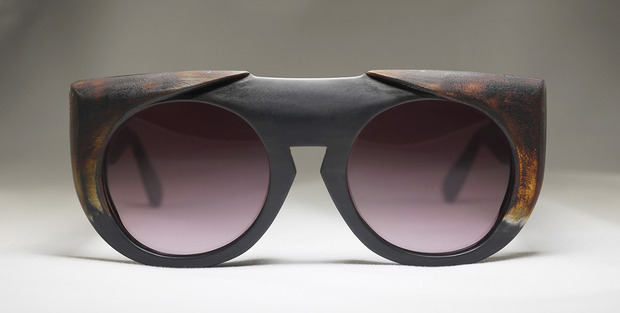
Our brand-new treatment that we just introduced is called RELIQUE. The idea is to get that texture that looks like its rusted—it looks like the sunglasses were found in the sea.
Offered in six different shades of horn as well as two different fits (European or Asian), all RIGARDS frames are cut by hand and made-to-order. To view more styles and the full list of stockists, visit their website. RIGARDS will be presenting their wares at Paris Fashion Week and SILMO in September.
All images courtesy of RIGARDS












